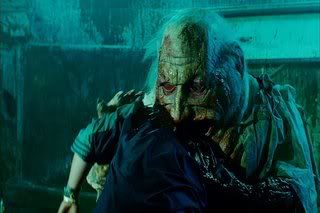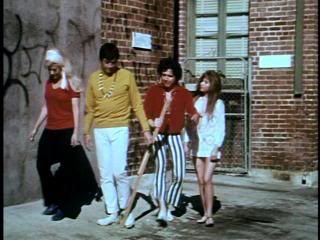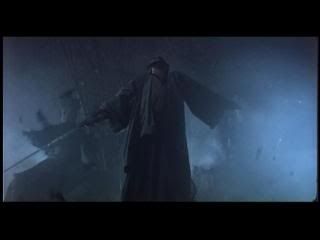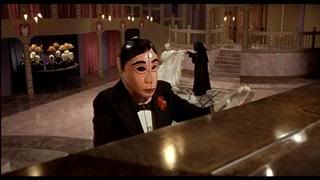
PLOT:
Remember those blissful nights you spent, out in the forest, camping with your family? Remember the fire, the marshmallows, the storytelling? Remember your family being ruthlessly slaughtered by a forest troll? No? Well, Jack Brooks does. And he’s pissed. Since that time, Brooks (Trevor Matthews) has become a plumber (and my understanding is that this means he’s voting for McCain), one with an immense anger issue. How does he cope with his anger? Considering the title of the movie, you can probably guess.
The monsters in question--the monsters who Jack Brooks must slay--are led by Professor Gordon Crowley (Robert Englund), who teaches night school for a group of ne'er do-wells, Jack among them. Prof. Crowley is a well-meaning old chap who unfortunately runs afoul an evil black heart that takes him over, and gives him the power to create zombies. Or something. Zombies that Jack Brooks must slay. In the process, Jack overcomes his anger issues, and saves some members of his night class--but not all of them, or it wouldn't be gory enough.
REVIEW:

Jon Knautz’s Jack Brooks: Monster Slayer is a harmless and fun creature feature, the kind of thing that you can pop on when you want a few laughs and a cheap thrill. It’s not really audacious, or ground breaking, or even particularly interesting, but it’s entertaining and it's reasonably well done. I guess this is damning it with faint praise, but all things considered, Jack Brooks doesn’t really screw anything up, and in the realm of low-budget horror films, that definitely counts for something.
The film is anchored around the performances of Englund and Matthews, and both are up to the task. Englund is able to give the sort of schlocky-yet-consummate performance you’d expect from an actor who has been living and breathing the genre for years--he’s practically this generation’s Vincent Price. He might not try very hard, but he doesn’t have to. Prof. Crowley’s an amiable guy, and Englund plays him in such a way that you can’t help but feel bad for him once he’s taken over by the ancient, evil force, making him the bad guy of the film.

Matthews, a relative newcomer, plays Jack as a high-strung loser, an average dude who can’t catch a break. His dialogue, though forced, is usually good for a laugh; complaining about his violent temper, he says: “Fuck man, I broke a bottle over my head once because I couldn’t open it! I mean, you know… that doesn’t even make any sense!”
There are no computer graphics in Jack Brooks, so some old timey horror purists should be happy--for instance, the monster that Prof. Crowley eventually morphs into is a gigantic puppet that took as many as eight handlers to operate at one time. In this sense, it has a definite old school feel to it; it’s kind of like a Stuart Gordon film (though less sleazy), or Evil Dead II (though less funny). Though low-budget, most of the monsters are quite impressive-looking; the cyclops and the Professor-creature are perhaps the most entertaining of the bunch.

The Anchor Bay DVD of Jack Brooks: Monster Slayer is presented in its original 1.78:1 aspect ratio, and contains a host of special features, including an audio commentary with the director, the writer, the composer, and Jack Brooks himself, Trevor Matthews. It’s nice to see a few behind the scenes videos; one that gives you insight into the monster-making process is interesting, but I’m not sure that anyone needs to see video from the World premiere at Sitges. Storyboard comparisons; a still gallery; deleted scenes; an art gallery; the trailer--all that shit is there.
Jack Brooks: Monster Slayer may not break new ground, but it’s good entertainment for anyone who wants to kill 80 minutes with some decent laughs, some old school monsters and gore, and a reasonable amount of bloodshed. Though I can see the humour falling flat for some, in most cases I think it hits its mark, and though the film might wait too long to bring on the real bloodshed, the final battle is gruesome and fun enough to make up for it.



























































